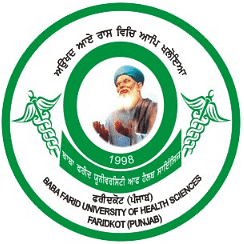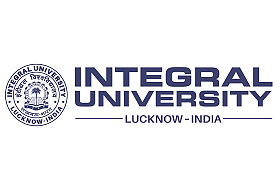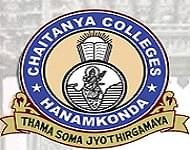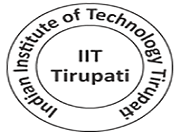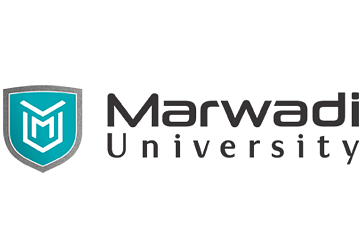Introduction
about Ph. D in Digital Arts
Ph.D. in Digital Arts from top college is
an advanced, interdisciplinary academic program that focuses on the
exploration, creation, and critical analysis of digital media and technologies
within artistic practices. This program integrates concepts from fine arts,
design, computer science, and media studies to foster innovative research and
creative work in digital art forms.
Key
Components:
Creative
Practice and Research:
Emphasizes the development
of original digital artworks and creative projects.
Encourages experimentation
with new media, interactive installations, digital storytelling, virtual
reality, and augmented reality.
Theoretical
and Critical Frameworks:
Involves studying theories
of digital media, art history, aesthetics, and cultural studies.
Encourages critical analysis
of digital art in social, political, and cultural contexts.
Technical
Skills and Tools:
Provides training in digital
tools and technologies such as 3D modeling, animation, game design, coding, and
multimedia production.
Incorporates software like
Adobe Creative Suite, Unity, Blender, and various programming languages.
Research
and Methodologies:
Practice-Based
Research: Combining creative
practice with academic research to generate new knowledge through artistic
production.
Interdisciplinary
Approaches: Integrating methods from
art, design, technology, and humanities.
Ethnographic
and Qualitative Research: Studying
audience interaction, user experience, and cultural impact.
Potential
Areas of Study:
Interactive and immersive
media
Digital animation and visual
effects
Game design and virtual
worlds
Digital performance and
installation art
Media archaeology and
digital preservation
Algorithmic art and
generative design
Career
Prospects:
Graduates of a Ph.D. in
Digital Arts can pursue careers in academia, industry, and the arts sector.
Potential roles include university professors, digital artists, multimedia
designers, creative directors, research scientists, and consultants for technology
and media companies.
What is
admission process for Ph. D in Digital Arts ?
The admission process for 2024 Ph.D. in Digital Arts typically involves several key steps. While the specifics
can vary by institution, the following outlines a general process:
1. Research
Programs and Institutions:
Identify universities that
offer a Ph.D. in Digital Arts or related fields.
Evaluate the faculty,
research facilities, program focus, and available resources to find a good
match for your interests and goals.
2. Meet
Prerequisites:
Academic
Background: Most programs require a
master’s degree in digital arts, fine arts, design, computer science, media
studies, or a related discipline. Some programs may accept candidates with a
bachelor’s degree if they have exceptional portfolios or relevant experience.
GPA: A strong academic record, typically with a
minimum GPA of 3.0 on a 4.0 scale. More competitive programs may have higher
GPA requirements.
3.
Standardized Tests:
GRE: Some programs may require the Graduate
Record Examination (GRE) scores. Check if your target program requires it and
prepare accordingly.
English
Proficiency Tests: For
non-native English speakers, proficiency in English must be demonstrated
through tests like TOEFL or IELTS. Minimum score requirements vary but
generally are around 90-100 for TOEFL iBT or 7.0 for IELTS.
4. Prepare
Application Materials:
Application
Form: Complete the university’s online application
form.
Transcripts: Submit official transcripts from all
post-secondary institutions attended.
Letters of
Recommendation: Typically
2-3 letters from academic or professional references who can speak to your
qualifications, creative potential, and suitability for doctoral study.
Statement
of Purpose: A detailed essay outlining
your academic and professional background, research interests, career goals,
and reasons for pursuing the Ph.D. This document should demonstrate your fit
with the program and how your research interests align with the faculty’s
expertise.
Portfolio: A portfolio of your creative work showcasing
your skills and artistic vision. This may include digital artworks, multimedia
projects, animations, interactive installations, or other relevant works. Make
sure to follow the specific guidelines provided by the program for portfolio
submissions.
Writing
Samples: Examples of your academic
writing or research work, such as published papers, thesis chapters, or
significant research projects.
5. Research
Proposal (Optional):
Some programs may require a
preliminary research proposal outlining your intended research topic,
objectives, methodology, and significance of the study. Even if not required,
submitting a research proposal can strengthen your application.
6.
Application Fee:
Pay the application fee as
required by the university.
7.
Interviews:
Shortlisted candidates may
be invited for an interview. This can be conducted in person, over the phone,
or via video conference. The interview assesses your fit for the program and
your research potential.
8.
Financial Aid and Scholarships:
Apply for financial aid,
scholarships, or assistantships if available. This might involve additional
applications or statements.
9.
Submission and Follow-Up:
Submit all materials by the
deadline.
Follow up with the
admissions office to ensure all components of your application have been
received and are complete.
10.
Decision and Acceptance:
Admissions decisions are
typically communicated several months after the application deadline.
If accepted, you will
receive an offer letter outlining the details of your admission and any funding
packages.
Accept the offer and
complete any additional enrollment steps required by the university.
What is
eligibility for Ph. D in Digital Arts ?
The eligibility criteria for Ph.D. in Digital Arts can vary by institution, but generally, the following
requirements are common:
1. Academic
Qualifications:
Master’s
Degree: A master’s degree in
digital arts, fine arts, design, media studies, computer science, or a closely
related discipline is typically required. Some programs may accept candidates
with a strong bachelor’s degree and significant relevant experience or an exceptional
portfolio.
GPA: A strong academic record, usually with a
minimum GPA of 3.0 on a 4.0 scale. More competitive programs may have higher
GPA requirements.
2.
Portfolio:
Creative
Work: Submission of a portfolio showcasing your
digital art projects and creative work. This should demonstrate your technical
skills, creativity, and artistic vision. The portfolio might include digital
artworks, animations, multimedia installations, interactive designs, or other
relevant works. Follow specific guidelines provided by the program for
portfolio submissions.
3. Research
Experience:
Evidence of research
experience in digital arts or related fields. This can include a master’s
thesis, research projects, publications, or professional experience in a
research role. Demonstrating the ability to conduct independent research is
important.
4. Letters
of Recommendation:
Typically, 2-3 letters of
recommendation from academic or professional references who can attest to your
qualifications, creative potential, research abilities, and suitability for
doctoral study.
5.
Statement of Purpose:
A detailed statement
outlining your academic and professional background, research interests, career
goals, and reasons for pursuing the Ph.D. This document should demonstrate your
fit with the program and how your research interests align with the faculty’s
expertise.
6. Writing
Samples:
Submission of writing
samples that showcase your research abilities and academic writing skills.
These can include parts of your master's thesis, published articles, or
significant research papers.
7.
Standardized Test Scores:
GRE: Some programs may require Graduate Record
Examination (GRE) scores, although this requirement is becoming less common.
Check the specific requirements of the programs you are applying to.
English
Proficiency Tests: For
non-native English speakers, proficiency in English must be demonstrated
through tests like TOEFL or IELTS. Minimum score requirements typically range
around 90-100 for TOEFL iBT or 7.0 for IELTS.
8.
Curriculum Vitae (CV) or Resume:
An updated CV or resume
highlighting your academic qualifications, research experience, creative
projects, exhibitions, publications, relevant work experience, and any other
pertinent achievements.
9. Research
Proposal (Optional):
Some programs may require a
preliminary research proposal outlining your intended research topic,
objectives, methodology, and significance of the study. Even if not required,
submitting a research proposal can strengthen your application.
10.
Interview:
Shortlisted candidates may
be invited for an interview, either in person, over the phone, or via video
conferencing. The interview assesses your research interests, academic
background, and fit with the program.
What is
syllabus of Ph. D in Digital Art?
The syllabus for Ph.D. in Digital Arts is designed to provide an in-depth understanding of digital media,
creative practices, and research methodologies. While specific courses and
requirements can vary by institution, the general structure includes core
courses, electives, research methods, and dissertation work. Here is an
overview of a typical syllabus:
Core
Courses:
Theories
and Concepts in Digital Arts:
Examination of key theories
in digital media, art history, and aesthetics.
Analysis of contemporary
issues and debates in digital arts.
Digital
Media and Technology:
Exploration of digital tools
and technologies used in art creation.
Study of software, hardware,
and emerging technologies like VR, AR, and AI.
Interdisciplinary
Approaches to Digital Arts:
Integration of concepts from
fine arts, computer science, design, and media studies.
Collaborative projects that
blend different disciplinary perspectives.
Research
Methods:
Qualitative
Research Methods:
Ethnography, case studies,
interviews, and participant observation.
Analysis of qualitative data
in the context of digital arts research.
Quantitative
Research Methods:
Statistical analysis,
surveys, and experiments.
Application of quantitative
methods to study digital media and user interaction.
Practice-Based
Research:
Combining creative practice
with academic research.
Documentation and critical
analysis of the creative process.
Elective
Courses:
Students can choose from a
variety of electives based on their research interests and career goals.
Examples include:
Interactive
Media and Design:
Principles of interaction
design and user experience (UX).
Development of interactive
installations, games, and multimedia projects.
Digital
Animation and Visual Effects:
Techniques in 2D and 3D
animation.
Study of visual effects in
digital media production.
Digital
Storytelling and Narrative:
Crafting narratives for
digital platforms.
Exploration of transmedia
storytelling and interactive narratives.
Game Design
and Development:
Game theory, mechanics, and
design principles.
Practical development of
digital games.
Media
Archaeology and Digital Preservation:
Study of the history and
evolution of digital media technologies.
Techniques for preserving
digital art and media.
Special
Topics and Seminars:
Advanced
Seminars in Digital Arts:
Current trends and emerging
issues in digital arts research.
Guest lectures and workshops
with leading scholars and practitioners.
Digital
Humanities:
Intersection of digital
technologies and humanities research.
Projects that use digital
tools to analyze and interpret cultural artifacts.
Professional
Development:
Teaching
Practicum:
Opportunities to teach
undergraduate courses and gain teaching experience.
Pedagogical training and
mentorship.
Publication
and Presentation Skills:
Preparing research for
publication in academic journals.
Presenting findings at
conferences and academic forums.
Dissertation
Research:
Proposal
Development:
Preparation of a detailed
research proposal.
Literature review, research
questions, and methodology planning.
Research
and Data Collection:
Conducting original research
under the guidance of a faculty advisor.
Data collection, analysis,
and interpretation.
Dissertation Writing and Defense:
Writing the
dissertation, including introduction, literature review, methodology, results,
and discussion.





